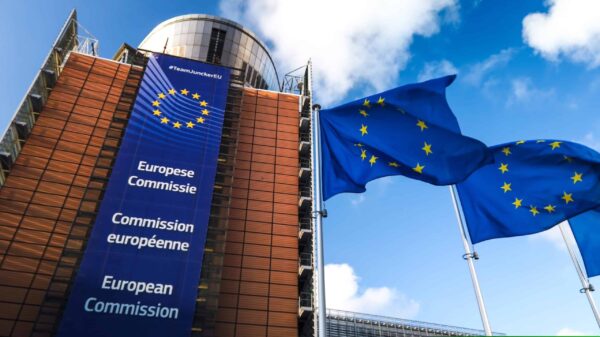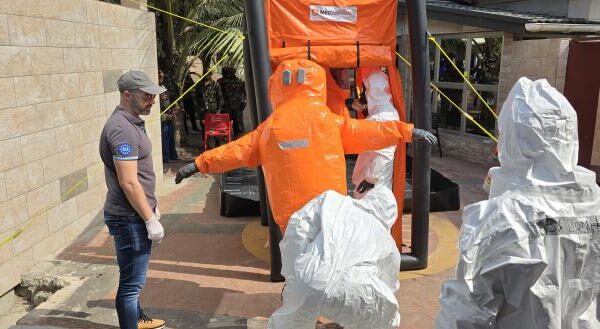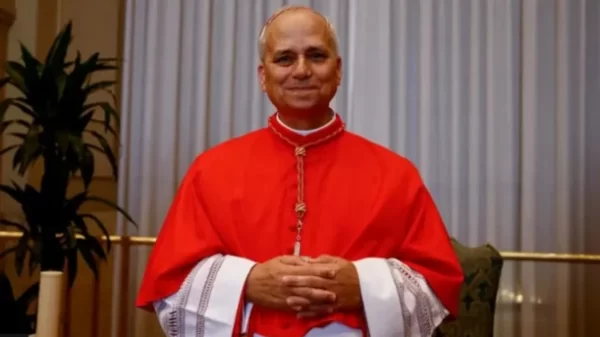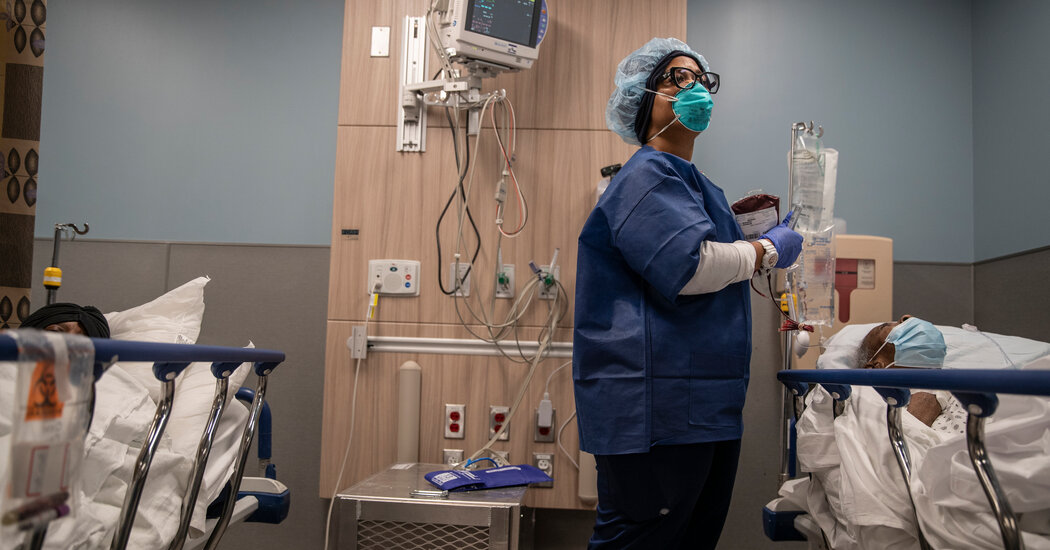The highly contagious coronavirus variant stretched the city’s health care system to the breaking point, but not past it.
More than 60,000 New York City residents tested positive for the coronavirus in a single day. Testing lines stretched for hours, and a quarantine hotel program doubled in size. Packed emergency rooms had too few nurses. Hospital morgues became so full that about 200 bodies had to be relocated by the city.
Like a tsunami, the Omicron variant of the virus swept through New York City from December to January, swamping defenses that had been built over the past two years. Some epidemiologists estimate that 40 percent or more of residents were infected. More than one in 10 public school students and about one in four school staff members had confirmed infections in the wave, according to state statistics.
The extraordinary surge exposed understaffing problems at the city’s hospitals, particularly among nurses, to a degree unseen earlier in the pandemic. For several weeks, tens of thousands of patients were treated by health care teams severely depleted by illness and burnout.
Yet now, with Omicron receding rapidly and virus cases plummeting more than 90 percent from their recent peak, health officials are also reaching an encouraging assessment: The city’s hospital system, although critically stretched, did not break. Experienced health care workers treated patients more effectively, and deaths were limited to a small fraction of the number recorded during the virus’s first wave in 2020.
This was partly because Omicron proved to be less deadly than previous variants, with far fewer patients ending up in intensive care units. Moreover, vaccines protected millions of New Yorkers against serious illness, and new treatments became available in limited supplies.
From Dec. 5 to Jan. 22, city statistics show, 2,846 New Yorkers died of Covid-19, compared with 18,700 during the pandemic’s three-month first wave. About two-thirds of those who died amid the recent surge were unvaccinated, city data shows, even though the unvaccinated compose just a small minority of New Yorkers. As a result, according to the city, the death rate among unvaccinated New Yorkers was 17 times higher than it was among those who were vaccinated, after adjusting for age.
The Omicron wave nonetheless strained the city’s hospitals, which still proved resilient because health care workers, despite widespread exhaustion, had learned from hard-won experience in 2020 how to limit severe illness and death, officials and workers said.
They knew to avoid intubating patients when possible, having learned that many people who are put on ventilators never come off. Instead, they relied on less invasive ways of providing supplemental oxygen and made better use of high-dose steroids to control inflammation. Hospital administrators activated emergency plans to open surge units, and consulted one another regularly to share advice or ask for reinforcements.
“Our hospitals did come under strain, particularly emergency departments, and — a little bit less so — our intensive care units compared to prior surges,” said Dr. Dave A. Chokshi, the city’s health commissioner. “But they held the line.”
Still, while many people hope that the waning of the Omicron surge is a turning point in the pandemic, the health care system’s gaps and shortages could prove far more devastating if another variant emerges that is equally contagious but more virulent, epidemiologists warned.
Clinicians also warn that the long-term toll of infection on millions of New Yorkers, including the constellation of post-virus symptoms known as long Covid, remains unknown.
“We don’t know all the secondary effects,” said Dr. Tom Wallach, a pediatric gastroenterologist at SUNY Downstate Medical Center in Brooklyn. Dr. Wallach said he had seen an unusually high number of children with Covid — at least six — in recent weeks who had gastrointestinal complications, including cholestasis, a condition that can damage the liver.
Exactly how many New Yorkers got sick is, for now, being answered through mathematical models. In New York City, just over a million new cases were officially logged by the health department from mid-December, as Omicron surged, through the end of January. But at the height of the wave, the city’s testing infrastructure was overwhelmed, making it difficult to get tested. Some people had infections so mild they never knew it. And many tested positive with at-home tests — results that were not counted in official statistics.
One Columbia University modeling team estimates that Omicron has infected 47.8 percent of New Yorkers so far, according to Dr. Wan Yang, a member of the team and an assistant professor of epidemiology at Columbia’s Mailman School of Public Health.
Dr. Jay Varma, an epidemiologist who helped guide the city’s pandemic response in 2020 and 2021, said the official count of a million probably understates Omicron’s reach. He estimated that two to five million city residents had been infected.
“What’s quite frankly stunning is the rapidity with which this spread through the population,” he said in an interview. “I don’t think any of us really anticipated it would be quite that bad given the level of vaccination we have in the city, as well as the relatively high level of adherence to basic mitigations, like masks.”
As high as case numbers rose during the recent surge, the one-day death count peaked at 143 on Jan. 1. By comparison, more than 800 people died of Covid-19 in one day during the first wave’s peak.
Still, the Omicron variant showed that hospitals remained vulnerable to being overwhelmed by a surge in patients — and that help is not always quick to arrive. A voluntary system that encourages better-financed hospitals to take patients from poorer ones resulted in some transfers, but too few to equalize conditions.
By early January, emergency rooms at some hospitals in Brooklyn and the Bronx were overflowing with older patients. Gurneys clogged hallways. Call bells in patients’ rooms went unanswered. The time it took to get medication grew, as did the gaps between meals.
At some hospitals, the number of nurses has shrunk during the pandemic, and the staffing gaps were exacerbated when between 2 and 10 percent of hospital staffs were infected with Omicron at the same time. Emergency room nurses were especially beleaguered, caring for up to 18 patients at once at one safety-net hospital.
“We are doing the work of way too many people,” Jessica Montanaro, a critical care nurse at Mount Sinai Morningside, said in late January. She added that she had personally seen “a mass exodus of nurses” during the pandemic.
At the peak of the wave, by far the highest case rates were among Hispanic New Yorkers. But Black New Yorkers were hospitalized at the highest rate, nearly 50 percent above the citywide rate, according to city data.
Although the Pentagon sent military doctors and nurses to two hard-hit public hospitals in Brooklyn and the Bronx, they did not begin work until Jan. 24, when Covid-19 hospitalizations had begun to decline. As the number of Covid hospitalizations peaked early in the second week of January, there was little outside help, leaving hospitals trying to hire travel nurses at $215 an hour from a limited pool.
The Coronavirus Pandemic: Key Things to Know
The state of the virus in the U.S. The coronavirus has now claimed about 900,000 lives across the country, and the Covid death rates remain alarmingly high. The number of new infections, however, has fallen by more than half since mid-January, and hospitalizations are also declining.
“There needs to be a much more nimble rapid response system for personnel redistribution,” said Dr. Edward Telzak, the chief of internal medicine at St. Barnabas Hospital, an independent hospital in the Bronx that treats predominantly poor patients and has far fewer resources than Manhattan’s large hospital systems.
Despite the variant’s extreme contagiousness, New York, like much of the United States, actually lowered some of its defenses to ensure that normal activities continued. In effect, the city moved closer to an approach of “living with the virus” during Omicron.
Bars and restaurants mostly stayed open, the Rangers and Knicks played games and many Broadway shows went on. N.Y.U. Langone Health began bringing some infected workers back after a five-day, rather than 10-day, isolation period. The rest of the country soon followed suit.
New York City schools stopped quarantining classrooms after confirmed Covid exposures. Students returning from winter break at the height of the Omicron surge were given rapid-test kits to take home when their classmates got sick.
The test kits alone, the city estimated, caught 25,000 cases. School attendance hovered around 70 percent in early January, as children were out sick or kept home by their parents to try to avoid infection.
While Omicron often causes milder illness in adults, it sometimes has a more severe impact on children, particularly those too young to be vaccinated, creating new challenges for health care workers. Hospitalization rates for children rose more quickly than in previous waves, mirroring trends elsewhere.
Still, of the 181 children that Cohen Children’s Medical Center in Queens admitted with Covid-19 in the recent wave, only one, an unvaccinated 17-year-old boy, died, a spokesman said. From Jan. 1 to Jan. 27, three children under 18 died of Covid-19 in the city, bringing the city’s total death toll in that age group during the pandemic to 32, according to data from the American Academy of Pediatrics.
Although Omicron is receding quickly, the wave is not totally gone. There were 2,633 people with Covid-19 in city hospitals on Feb. 2, fewer than half than at the Omicron peak, but still more than four times as many as before the variant was first detected in December.
Even with the numbers declining, medical workers on the front lines say staffing shortages remain acute.
At SUNY Downstate, employees from across departments pitched in when the emergency room was taking in four times its regular number of patients in early January. Vaccines and new treatments helped limit severe cases. But there were too many patients flooding the entire health system at once to “load balance,” or transfer patients, between Downstate and other hospitals that were also being hit hard.
Still, strategies that had been developed after earlier waves helped, said Patricia A. Winston, the hospital’s senior vice president for operations. Those included regular check-in calls with state and city officials and the Greater New York Hospital Association, a trade group that followed the situation across medical centers.
“Before, it was like, you were in this by yourself,” Ms. Winston said. “Now you talk to each other and work together and figure out how to strategize. Even if you can’t move somebody, you have someone to talk to.”




























